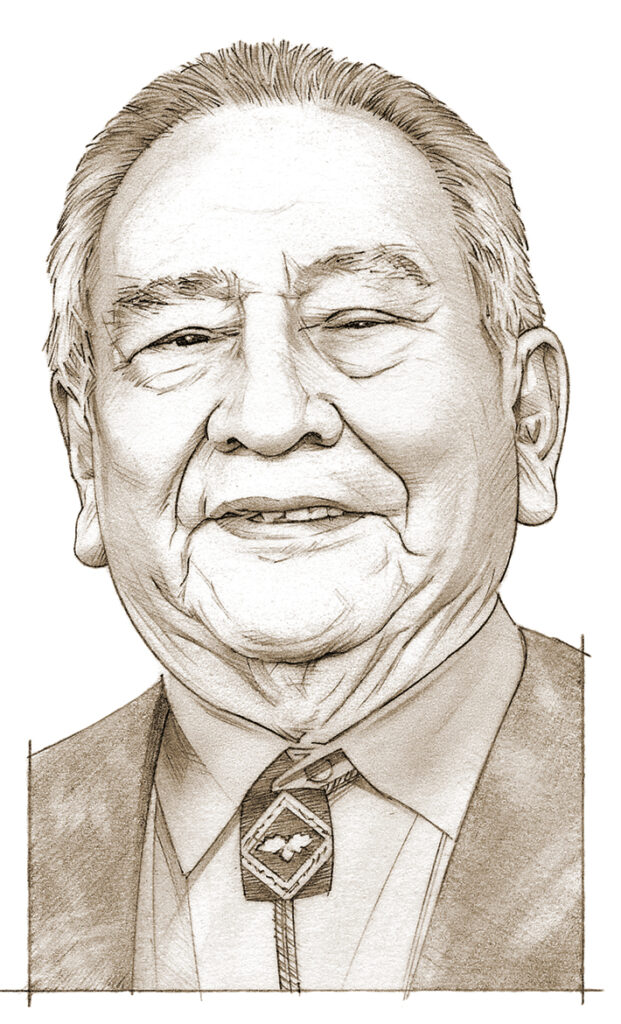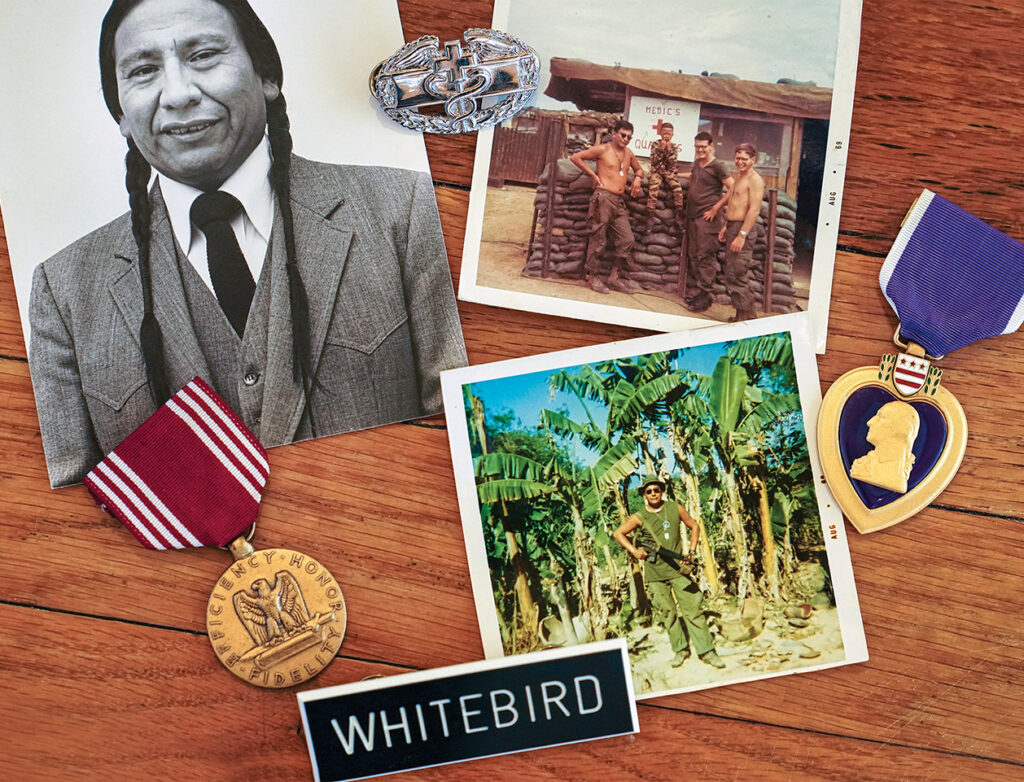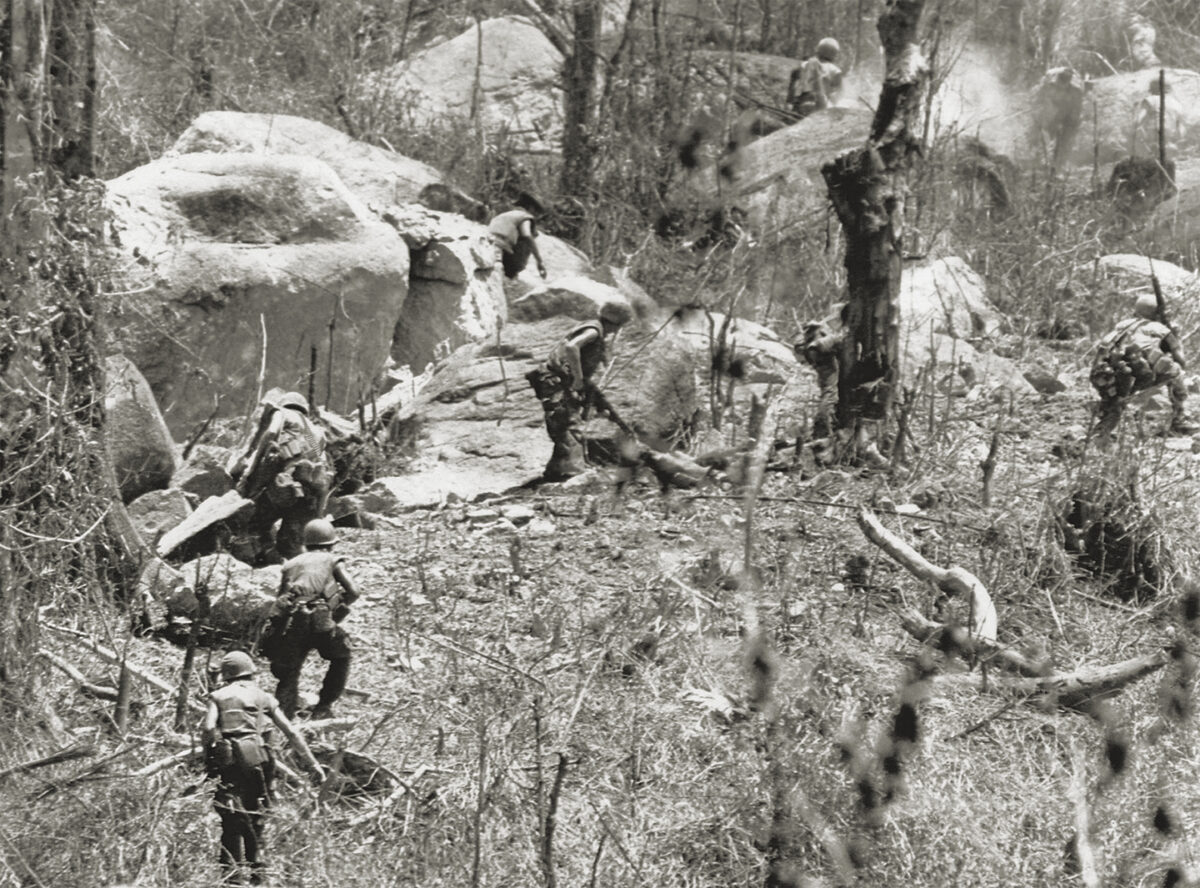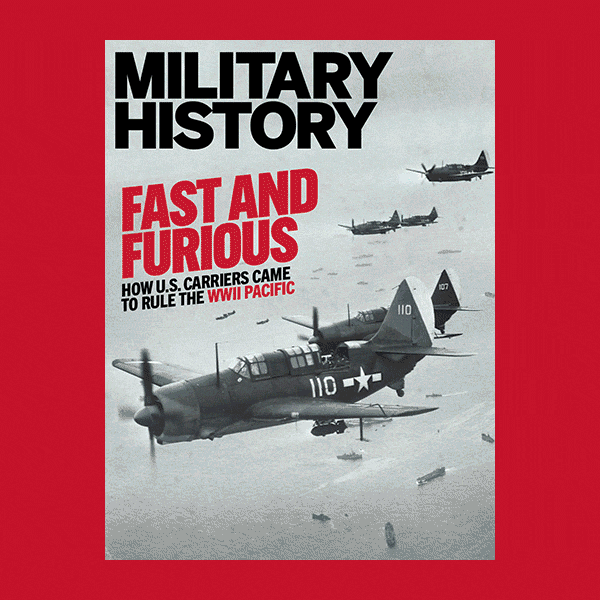
Francis Whitebird hails from a long line of soldiers. His great-grandfather, grandfather and father all saw service in the U.S. Army dating back nearly 150 years. At the outset of the Vietnam War he honored that family legacy and the warrior tradition of the Rosebud Lakotas of South Dakota by enlisting. Whitebird endured 19 months of intense fighting as a combat medic in 1969 and ’70. After the war he graduated from Harvard, became a teacher, served in tribal government, received a presidential appointment to a national advisory committee and worked to preserve the Lakota language. He also raised two sons, Colin and Brendan, who carried on the family tradition by joining the Army and fighting in Iraq. At the 2022 National Memorial Day Concert in Washington, D.C., actors and co-hosts Gary Sinise and Joe Mantegna honored Whitebird in person for his service. Military History recently sat down with the 80-year-old veteran to learn more about his experiences and legacy of service.
You didn’t set out to be a medic. How did that transpire?
Well, I volunteered for the infantry. After basic training they assigned me to Fort Sam Houston [in San Antonio, Texas], where there was a center to train all the medics. Wherever the Army is, of course, they have to have medical support, and so we wind up all over the place. I wound up with an infantry company as a combat medic.
When you’re assigned to an infantry company, you’re in charge of a platoon—about 40 men. In addition to wounds, you treat them for heat casualties, sores and other injuries. There’s something in Vietnam called elephant grass, and when you pass through it, it cuts into your arms. There’s other stuff like jungle rot and creeping crud. I don’t know their scientific names, but that’s what we called them. There’s also mosquitoes and leeches and whatnot.
Some men experienced malaria and sprains. Leg injuries were common, because we’d be up in the mountains, and people would twist their ankles. It’s a full-time job just to keep them healthy. Then you get into a firefight, and you have to drag them back, treat them and get them out of there.
You have to earn your Combat Medical Badge, just like the Combat Infantryman Badge. You have to serve at least two months in a jungle or get into four firefights, and then they give it to you. You earn it through longevity. I was assigned to the 196th Light Infantry Brigade as a platoon medic with Bravo Company for two months, then became company medic for Charlie Company, where I was in charge of three medics.
What was it like serving as a combat medic in Vietnam?
For the first nine months when I was the company medic for Charlie Company, we went through 27 medics. That was, like, one medic per platoon per month killed or wounded. When somebody starts yelling, “Medic!” they’re counting on you. I don’t know why we do it. I guess we’re young and foolish and don’t know any better.
I remember the Battle of Hiep Duc. The fourth longest battle in Vietnam, it went for 13 days. Infantry companies were being rotated in and out. We had lots of casualties. That was in August of 1969—same time as Woodstock. That battle followed Hamburger Hill. I always thought, Why didn’t they just pull us back and B-52 the place? Some general probably wanted to earn another star. Anyway, at that battle there was a guy named Rocky Bleier, who later played for the Pittsburgh Steelers. He was wounded there. He has a great story about recovery and going into the NFL.
At Hiep Duc my company hit booby traps—they call them IEDs now. They were strung out along the top of the hill. We had 38 casualties, and my three medics went down. I collected all the morphine syrettes and started treating people. If one needed a shot of morphine, I gave him one and then just kept going. We were lucky there were no fatalities.
After the third booby trap went off, I called for the “Dustoff”—that’s what we called the medevac helicopter. I put on the guy who set off the booby traps—his name was Marty, and he was from Vermont. He was filled with wounds. I had already given him a shot of morphine. As I was putting him on the chopper, he looked at me and said, “Doc, I’ll see you back in the world,” and gave me a peace sign. He was just smiling, because the morphine had kicked in. I did meet him again, at a reunion in St. Louis in 1988. And he came over with his family and told them, “This is the guy who saved me.” That means a lot when somebody does that. When people thank me for saving their lives, I tell them, “I’m only one—there are nurses and doctors that take care of you too.” One of them said, “Yeah, but you’re the one who pulled me out of the line of fire.”
Tell us about your own experience of being wounded.
I was hit by shrapnel from an RPG [rocket-propelled grenade]. A large sliver hit my side, and it burned like hell. It came in so hot, it cauterized the wound. I used clamps to pull out the shrapnel and threw it away. There was a big firefight at the time. I was running toward somebody who was wounded when I got hit. So I just put on a piece of tape to keep the dirt out and kept on going. Other people needed my help.
How did you deal with fear when helping the wounded amid a firefight?
Adrenaline kicks in. It takes over, and you don’t have that fear. You do what you’re trained to do—go in there and get the guy out. I didn’t think about fear; I just thought about saving the guy. After the firefight adrenaline is still in your body. Sometimes, you’re just shaking from it. You think, Holy crap! I survived that! Then you go on to the next battle.
Of course, there’s always the possibility you could get killed. When I was in jungle training, this instructor said that in a firefight the longevity of an officer, RTO [radio telephone operator] or medic is about 90 seconds. I thought, Oh, no, I’m dead.
You must have been under incredible stress. How did you handle it?
Well, there’s only so much you can take. In that humidity and heat you could smell human blood. It gets on your hands, on your jungle fatigues. You don’t go back and take a shower. I think the longest we stayed in the jungle was 69 days. You just need to go day by day and survive. Don’t worry about the future.
One of the loneliest times was radio watch. Every half hour the men had to check in with a squelch on their radios so we knew they were awake. You’re lying there in between check-ins, and you think about home. You think about different things and how you should have done them. Some of the people were married, and some had girlfriends. Of course they think about them. There was nothing to do.
The worst times were when guys got a “Dear John” letter. Their minds weren’t right. In the next firefight they wanted to go out in a blaze of glory. We called it the “John Wayne syndrome.” It didn’t happen very often, but it happened. So, to get away from that, we’d send them to the rear, get them drunk a couple of days, and they’d come back feeling better.
Describe your Lakota family’s time-honored warrior tradition.
One of my great-grandfathers was an Indian scout for Company E of the 2nd U.S. Cavalry, and I have an uncle who was a World War I vet with the infantry. We [Lakotas of the Rosebud Indian Reservation] had, I think, 200 people serving in World War I when probably fewer than 5,000 people lived on the reservation. My uncle was with the American Expeditionary Force in Siberia.
In World War II my dad was a Lakota code talker. He took an oath that he could not tell anyone about it. Not like the Navajos in the Pacific. After World War II [the Navajo code talkers] were beating their chests and jumping up and down. There were about 30 tribes involved as code talkers in Europe then, and they all took an oath they could not tell anyone, because the United States might go to war with Russia.
Code talking started in World War I. There were zero Navajo code talkers and about 40 Lakota code talkers then. There was even a team of code talkers in Korea. They never talked about it until 1968, when they lifted the ban. My dad told me then he was a code talker.

What was it like to receive public recognition at the 2022 National Memorial Day Concert?
To tell you the truth, I thought I was going to be among a whole bunch. I didn’t know I was one of two people being honored. I knew I was into something when they put us in the front row. My good friend from Vietnam, Paul Critchlow, was with me. He’s from Omaha, Neb., and was a paratrooper pathfinder.
How did Vietnam change your life?
Change came very slowly. First of all, I had to deal with PTSD, which I did by running 5 miles a day. Then I went to Harvard for four years. It didn’t really sink in, though, until I attended a “rap group” at the VA. It was for combat people, and it was the first time I told stories about my combat experience to anyone. That really helped. The other thing that was helpful was something English speakers call a sweat lodge. It really should be called a prayer lodge, because that’s what you do. It cleanses your body but also cleanses your mind. Praying is primary, sweating secondary. When we started doing these prayer lodges, a lot of the combat people started coming in and getting better. You’ve got to let the stories out. I keep telling my kids, “Tell your story.”
Do you ever wonder how you survived Vietnam and so many other challenges?
You know, I’m a cancer survivor for 19 years—probably got it from Agent Orange—and, well, I’m doing okay. I’m still aboveground!
This story appeared in the 2023 Summer issue of Military History magazine.
historynet magazines
Our 9 best-selling history titles feature in-depth storytelling and iconic imagery to engage and inform on the people, the wars, and the events that shaped America and the world.







